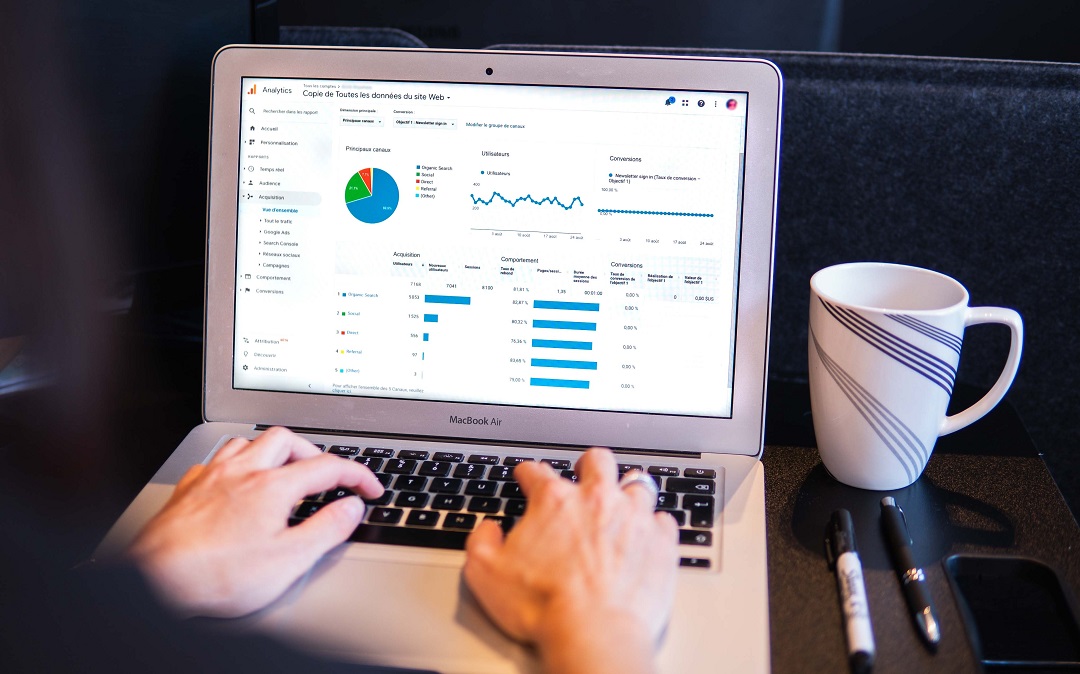As the workplace industry advances, the number of team effectiveness models rapidly increases, making it challenging for team leaders to choose the best model. However, before selecting a model, it is crucial for teams to gain a deep understanding of their individual and collective strengths. The HIGH5 strengths assessment is a powerful tool that can help teams identify their unique talents and guide them in choosing a model that aligns with their strengths and goals. By taking this assessment, teams can lay the foundation for a more targeted and effective approach to enhancing their performance and achieving success.
Examining the strengths and weaknesses of various team effectiveness models is a useful way to encourage innovation in your team and develop efficient teams. Each model is focused on different elements of team effectiveness, including goals, roles, processes, resources, communication procedures, levels of trust, conflict resolution, etc.
Consequently, team leaders have been trying to find the most optimal model for a long time. In this article, we will define team effectiveness, provide an in-depth review of the 9 most popular team effectiveness models, and discuss how to choose the right model based on your needs. In the end, we’ll give you some tips about improving your current team effectiveness model.
What is a team effectiveness?
Team effectiveness is defined as a team’s capacity to achieve its goals and objectives (Salas, Goodwin, and Burke, 2009). It’s also referred to as team performance that leads to improved outcomes such as developing problem-solving, technical and interpersonal skills, or achieving team synergy.
To improve team performance and develop successful teams, managers have developed team effectiveness models based on different principles. One powerful tool that can help teams identify their strengths and enhance effectiveness is the HIGH5 strengths assessment. By taking this assessment, teams can gain valuable insights into their individual and collective strengths, allowing them to optimize their potential, avoid dysfunctional elements, focus on results, and foster productive conflict resolution.
Effective teamwork models are accompanied by plenty of benefits such as an ability to optimize the team to use their full potential, avoid dysfunctional elements of the team, focus on results, and provide productive conflict resolution.
Usually, different models have different benefits and their pros and cons vary. Even though leaders use diverse team effectiveness models for achieving team success, the most common aspects of team effectiveness include social cohesion, mutual accountability, productive conflict resolution, correct roles, trust, and honest communication (Rico, Alcover, & Tabernero, 2011).
Pro Tip From HIGH5
Before adopting a team effectiveness model, have your team take the HIGH5 strengths assessment to identify their individual and collective strengths. Use the results to select a model that aligns with your team’s unique talents and goals, ensuring a more targeted and effective approach to enhancing team performance.
11 team effectiveness models and how to apply them
Research proves that high-performance teams lead the company to grow and succeed. As the organizational industry becomes diverse, increasingly more team effectiveness models are being developed.
Today we will review nine of the most widely used, yet simplest team effectiveness models. We will discuss the theoretical principles they are based on, the ways they are used, and methods of applying them to your team.
Each of these models identifies key factors and common challenges of effective teams. In the end, you will be able to decide which one is more suitable for your team’s goals.
9 best team effectiveness models:
- GRPI Model of Team Effectiveness (Rubin, Plovnick, and Fry)
- The Katzenbach and Smith Model
- The T7 Model of Team Effectiveness
- The LaFasto and Larson Model
- The Hackman Five Model of Team Effectiveness
- The Lencioni Model
- Tuckman’s FSNP/FSNPA Model
- Salas, Dickinson, Converse and Tannenbaum model
- Google Model
- The Robbins and Judge Model
- The Drexler-Sibbet Team Performance Model
GRPI Model of Team Effectiveness (Rubin, Plovnick, and Fry)
The GRPI model is one of the oldest team effectiveness models. It was first introduced by Richard Beckhard, an American organizational theorist, in 1972. But five years later, the model was revised. Today’s GRPI model was developed by Rubin, Plovnick, and Fry in 1977. GRPI is an abbreviation of the 4 components of this model: Goals, Roles, Processes, and Interpersonal Relationships.

According to this model, effective teams begin by focusing on common goals. Then, they define goals and work together on team processes. The last step is maintaining harmonious relationships between team members. The 4 components of the GRPI model are the following:
Goals – clearly defined objectives and intentions that are achievable. Effective teams should be clear about their main purpose and determine their priorities in advance. It’s the initial and most important element in this model.
Roles – responsibilities and expectations from team members. Each team member should have a well-defined role and acknowledge their duties. The role of the team leader has to be obvious as well.
Processes – the team must communicate about the processes of decision-making, problem-solving, or conflict avoidance.
Interpersonal Relationships – honest communication is an integral part of productive teams. Lack of trust creates confusion and disorientation. Therefore, effective teams have satisfying interpersonal relationships between team members.
The Katzenbach and Smith Model
The Katzenbach and Smith Model was developed in 1993 by Jon Katzenbach and Douglas Smith. It’s based on the studies of teams in various business companies faced with challenges. The model was first introduced in the book called ‘The Wisdom of Teams’. The Katzenback and Smith model is usually conceptualized as a pyramid or triangle where each point represents the team’s goals.
The sides of the pyramid or triangle represent components of the main objective. These components vary across problem-solving, technical and interpersonal skills, professional skills, teamwork skills, productive conflict resolution, developing organizational resources, etc.

The model helps the team leaders assess their team based on 3 components:
Commitment – team commitment can be achieved by developing meaningful objectives, setting specific goals, and a common understanding of the purpose of the team.
Skills – team skills include problem-solving skills, communication skills, effective decision-making skills, or skills for resolving dynamic conflicts.
Accountability – team leaders should try to foster accountability. It refers to both individual accountability and mutual accountability. This means that members should be committed to both individual tasks and team goals.
The T7 Model of Team Effectiveness
The T7 Model was developed by Michael Lombardo and Robert Eichinger in 1995. The model defines the factors that have an impact on team effectiveness. According to the authors, team effectiveness is affected by 5 internal and 2 external team factors. All of them start with “T” which is why it’s called the “T7 Model”.
The main purpose of this model is to help team leaders identify the cause of team dysfunction to overcome the problems. Internal factors include:
Thrust – a goal is shared by all the team members.
Trust – employees trust each other and believe that each team member is committed to the collective goal.
Talent – team members possess proper skills to perform tasks on time and produce effective team performance.
Teaming – the team is equipped with effective dynamics of teamwork, there is a strong emotional connection between team members, and they work well together.
Task skills – execution of tasks is performed timely and efficiently by each team member.

External factors include:
Team leader fit – the team has a proactive team leader who collaborates with members and considers their points of view before making decisions.
Team support from the organization – organization gives the team the opportunity to work towards its goals. The team is equipped with all the sufficient resources by the organization.
High-performing teams take all internal team factors into consideration. But even if the five internal factors are present, the team can’t be considered as effective if external factors aren’t presented.
The LaFasto and Larson Model
This model is developed by Frank LaFasto and Carl Larson. In 2001 the authors proposed a new model for team effectiveness in order to increase the likelihood of high-performing teams. They reviewed 600 teams from various industries and asked them to answer the simple question “What is an effective team?”.
They developed 4 components of team effectiveness:
Team members – leaders should be aware of the potential of team members. Identify their skills, assign tasks properly, and pick the right people.
Team relationships – try to encourage healthy relationships between team members. Effective communication is an integral step in developing team cohesion.
Team problem-solving – efficient communication and trust between team members foster productive conflict resolution. Coworkers with positive relationships tend to solve problems productively.
Team leadership – leaders should use all their effort and resources to promote commitment in the team.
Organizational environment – a collaborative and healthy team environment helps the team members to improve their performance and achieve success.
The Hackman Five Model of Team Effectiveness
Richard Hackman developed another team effectiveness model in 2002 which is frequently called the Five Model of Team Effectiveness. The model is proposed in his book “Leading Teams: Setting the Stage for Great Performances.” The book identifies 5 conditions that increase the likelihood of team effectiveness.
According to him, these five conditions should be present in the group in order to work harmoniously together. He conducted research and proved the validity of the following 5 conditions:
Being a real team – members of real teams have well-defined roles. They acknowledge their duties and objectives. Real team members are independent and oriented towards collective goals.
Compelling direction – effective teams have a clear direction towards success. They set out small milestones that are challenging enough to achieve the big goal. Clear direction motivates team members.
Enabling structure – efficient teams require a solid team structure. Well-defined team structures help the team organize its tasks and carry them out.
Supportive context – a team requires a company context that allows its members to work efficiently. Supportive context means that team members are encouraged by each other and the leader and they have adequate resources, a company culture of trust, and an opportunity for individual growth.
Expert coaching – having a coach or mentor who provides guidance for the team members increases the chances of productive work. Experts are focused on helping the team overcome issues regarding interpersonal relationships or business goals.
The Lencioni Model
This model was created by Patrick Lencioni in 2005 when he published a book called “The Five Dysfunctions of a Team”. The book pointed out the causes of team dysfunctions and interpersonal conflicts during teamwork.
The author demonstrated how fear of conflict can develop dysfunctional characteristics of a group. Today the Lencioni model is considered a team effectiveness model. The author suggests leaders understand the dysfunctions of the team in order to overcome existing problems and achieve success.

According to Lencioni, the 5 dysfunctions of the group are:
Absence of trust – when team members don’t trust each other, chances are high that they won’t ask for help or advice during tough times. The absence of trust can create an unhealthy atmosphere where team members don’t help each other. It will badly affect achieving the basic goals of an organization.
Fear of conflicts – dynamic conflicts are considered positive factors for the team because conflicts carry an opportunity to develop innovative and original ideas. However, fear of conflicts can lead to tension between team members without finding a productive solution.
Lack of commitment – team members need to be committed to their work in order to assign their tasks productively. While commitment to a team increases effectiveness, lack of commitment badly influences team performance.
Avoidance of accountability – lack of accountability means that team members don’t try to dedicate themselves to teamwork. Avoidance of accountability can lead to reduced trust and decreased effectiveness.
Inattention to results – when team members are overly focused on their own goals, they become inattentive to the team’s overall goals. In this case, fulfilling the team goal becomes difficult because employees just forget to take care of the collective objectives.
Lencioni suggests that a team should improve these 5 dysfunctions step by step. The model is illustrated as a pyramid and team leaders start from the bottom and reach the top of the pyramid.
Tuckman’s FSNP/FSNPA Model
Bruce Tuckman introduced a new model of team development in 1965. This model is often identified as FSNP or FSNPA model and both these names are abbreviations of the 4 or 5 stages of effective teams. Originally, Tuckman presented 4 stages that are necessary to increase the probability of team effectiveness. However, in 1977 the FSNP model was revised by Mary Ann Jensen who added one more phase – Adjourning.

According to the FSNPA model, these are the 5 elements of team effectiveness:
Forming – team members get to know each other during the stage of team formation. They develop basic insights into the structure and a common goal of the team members.
Storming – during this stage, the group formation continues and members become more aware of the team’s challenges. As the team is not fully formatted, these challenges can be related to interpersonal relationships, projects, or roles.
Norming – at this stage, cohesive teams are formed. The members start to identify themselves as a team, resulting in group cohesion and commitment. Members internalize the aims and values of the team and become more effective.
Performing – this is the stage when team members work the most productively and reach the maximum team effectiveness. The team is already stable and the goals are clear.
Adjourning – it’s the last stage of the team when the members finish the project, achieve goals, and develop future objectives.
Salas, Dickinson, Converse and Tannenbaum model
This model is one of the late models of team effectiveness, developed by Salas, Dickinson, Converse, and Tannenbaum in 1992. It’s based on Hackman’s earlier model of 1983. The authors revised common elements of team effectiveness and suggested a new model. They pointed out the impact of organizational context on the performance of a team. The model includes 6 team effectiveness factors:
Organizational context – supporting and encouraging the organization environment provides a healthy climate for the team to develop professionally. Team members get the motivation to have greater results.
Team design – a team should be composed of the right group of people, capable of performing their duties. Effective team design includes the correct delegation of roles, a well-defined structure, and clear goals.
Team synergy – team members should cooperate effectively with each other and move forward to achieve shared goals.
Effective processes – effective processes include the professional skills, knowledge, and effort of the members, as well as, strategies used to perform tasks.
Material resources – teams can’t work effectively if they don’t have access to resources that are needed to get high-quality products of the work.
Team culture – having a healthy team culture is another key factor of high-performing teams. It includes well-defined goals, clear ways of achieving them, and open relationships between members.
Google Model
Based on all the above-discussed models of building teams, Google determined key elements for team effectiveness. According to Forbes, the Google research team found that teams were effective because they work together regardless of circumstances. The Google model is based on the project called Aristotle and the goal was to answer the question: “What makes a team effective at Google?”
The 5 elements of the Google model are:
Psychological safety – creating a culture of trust and transparency helps the team members feel safe. A safe environment encourages them to take risks and bring innovative perspectives to solve problems.
Dependability – when people in the team are accountable, members feel that they can rely on others during tough times. This increases the likelihood of a foundation of trust.
Clear goals – team members shouldn’t spend their cognitive resources on understanding what the current goal means. All the goals should be defined in advance to help the employees focus on problem-solving.
Meaningful work – when people see the purpose in their work, they usually try harder to perform well. According to Google, meaning in work includes financial security, exhibiting self-expression, or support to the family.
Impact – team members often thrive when they have an opportunity to see that their work actually makes an impact on others.
The Robbins and Judge Model
The Robbins and Judge Model focuses on the components of individual behavior in organizations. It emphasizes the importance of individual differences, values, and personality traits in shaping one’s self-concept and overall job performance. By understanding these factors, individuals and organizations can better align personal strengths with professional roles, leading to enhanced job satisfaction and productivity.
The Drexler-Sibbet Team Performance Model
The Drexler-Sibbet Team Performance Model outlines seven stages of team development: Orientation, Trust Building, Goal Clarification, Commitment, Implementation, High Performance, and Renewal. This model highlights the importance of each stage in developing a cohesive team where individual self-concept is positively reinforced through team dynamics and collective success. By navigating these stages effectively, teams can optimize performance and support individual growth within the team context.
How to choose the right team effectiveness model for your team?
Since there are several team models for increasing effectiveness, it’s not easy to choose the most efficient oWith several team models available for increasing effectiveness, choosing the most efficient one can be challenging. Different models focus on various elements and objectives. To make an informed decision, teams can start by taking the HIGH5 strengths assessment. By identifying their individual and collective strengths, teams can better understand which model aligns with their unique talents and goals.
The assessment results can guide teams in selecting a model that leverages their strengths and addresses their specific challenges. Leaders that want to help the team to work more effectively, should pay attention to all the components of team effectiveness. Below we’ll provide some tips to choose the right model for your team.
Point out the flows – determine what are the things that make your team’s progress slow down. Focus on these flows and choose the model which considers your problem.
Consider your schedule – examine your company’s current schedule and see how much time you have to spend on improving effectiveness without harming current projects.
Measure resources – some models of the team working require more material or emotional resources than others. Think about how much resources you can invest in order to improve effectiveness.
Focus on team skills – be aware of the problem-solving skills of the team members. Implementing a team effectiveness model requires a collective effort from the leader and team members.
Pro Tip From HIGH5
Before selecting a team effectiveness model, have your team complete the HIGH5 strengths assessment. Analyze the results to identify common themes and areas of strength within your team. Use this information to narrow down your choices and select a model that best fits your team’s unique composition and goals.
How to improve your current model?
Most efficient teams already have a specific model for increasing performance. However, working on increasing team effectiveness, even more, is what most leaders desire. It doesn’t matter whether your strategies correspond to any of these team effectiveness models, the first thing you should do is to measure your current model of team effectiveness.
Try to identify your current strategies by asking yourself questions about various team effectiveness models. Determine what is your team’s current potential and things that need to be improved. In order to improve your current model for team effectiveness, you can rely on any of the above-discussed models for building teams.
Compare your strategies to the opinions of experts, measure the effectiveness based on various components of team effectiveness, and set clear goals for future improvement.
7 tips on how to create a high-performance team
These tips will save you time and energy, and help you build a high-performing team. These are:
Clearly define roles and responsibilities
Ensure each team member understands their specific role and responsibilities. This clarity helps prevent confusion and overlap, fostering accountability and efficiency.
Foster open communication
Encourage open and honest communication among team members. This builds trust and ensures that issues are addressed promptly, preventing misunderstandings and fostering collaboration.
Set clear goals and objectives
Establish clear, achievable goals and objectives for the team. This provides direction and motivation, helping team members stay focused and aligned with the team’s mission.
Promote collaboration and teamwork
Create an environment that promotes teamwork and collaboration. Encourage team members to share ideas and work together towards common goals, leveraging each other’s strengths.
Provide regular feedback
Offer constructive feedback regularly to team members. This helps individuals understand their performance, recognize their strengths, and identify areas for improvement.
Invest in professional development
Support the continuous learning and development of team members. Providing opportunities for skill enhancement and growth keeps the team adaptable and competent.
Recognize and reward contributions
Acknowledge and reward the contributions of team members. Recognition boosts morale and motivates individuals to maintain high levels of performance.
Team effectiveness modelsFAQ
What are the 7 C’s of team effectiveness?
The 7 C’s of team effectiveness are: Communication, Coordination, Confidence, Conflict Resolution, Commitment, Cooperation, and Cohesion.
What are the 3 parts to the team effectiveness model?
The three parts of the team effectiveness model are: Inputs (team composition and resources), Processes (team interactions and behaviors), and Outputs (team performance and member satisfaction).
What are the four key features to the team effectiveness model?
The four key features of the team effectiveness model are: Context (environment and culture), Composition (team members and roles), Processes (team dynamics and interactions), and Outcomes (performance and satisfaction).
What is the LaFasto and Larson model?
In 2001, LaFasto and Larson developed a model called the Five Dynamics of Teamwork and Collaboration. This technique is made up of team members (choosing skilled and committed employees), team relationships (promoting positive workplace relations), problem-solving, leadership, and workplace organization.
What are the four sets of processes for team effectiveness?
There are multiple ways to achieve effectiveness. However, most teams utilize one of 4 methods. They are the Lencioni model (Lencioni’s solution to a team’s 5 dysfunctions), the Tuckman team development model (forming, storming, norming, and performing) GRPI model (roles, goals, delegation, relationships), and the T7 model (thrust, trust, talent, team skills, task skills, team leader fit, team support).







